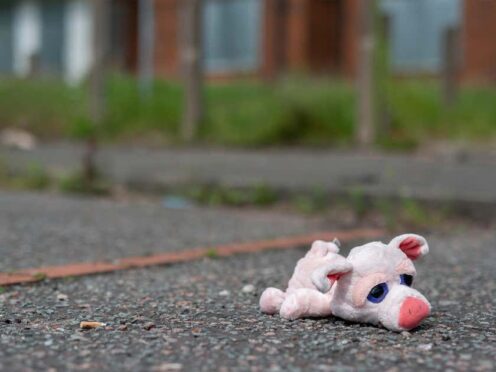Labour has pledged an “ambitious strategy to reduce child poverty” but has faced criticism for not vowing to scrap a Conservative policy long-blamed for keeping children in such a situation.
The party’s manifesto states that they will work with the voluntary sector, faith organisations, trade unions, businesses and devolved and local government “to bring about change”.
Leader Sir Keir Starmer said the party will lift millions of children out of poverty but did not give detail as to how or a timeline for when, as he launched the document on Thursday.
He had confirmed during a Sky News interview on the eve of the manifesto launch that scrapping the two-child benefit cap would not be included in its manifesto.
Last month, Sir Keir said he would scrap the cap “in an ideal world” but added that “we haven’t got the resources to do it at the moment”.
The Child Poverty Action Group (CPAG) has estimated removing the cap – introduced in 2017 and restricting Child Tax Credit and Universal Credit to the first two children in most households – would lift 300,000 children out of poverty and mean 800,000 children are in less deep poverty, at a cost of around £1.8 billion.
Asked by a reporter at the manifesto launch if he had a target for how many children he wanted to be lifted out of poverty, he said: “We will have a strategy for dealing with poverty, just as the last Labour government did.
“And we took millions of children out of poverty and we will do so again.”
He said a “strong plan” would be needed to deal with issues that “bear down” on poverty, such as housing, education, health and good jobs.
The party pledged to
– create more good jobs, reform employment support, ban “exploitative” zero hours contracts and make work pay
– review Universal Credit “so that it makes work pay and tackles poverty”
– end mass dependence on emergency food parcels, which it said “is a moral scar on our society”
– introduce free breakfast clubs in every primary school
– cut fuel poverty
– retain the triple lock for the state pension and adopt reforms to workplace pensions “to deliver better outcomes for UK savers and pensioners”
– overhaul regulation of the private rented sector including a vow to “immediately abolish” Section 21 so-called no-fault evictions, empower renters to challenge unreasonable rent increases, and “take steps to decisively raise standards”, including extending Awaab’s Law to the private sector
– deliver the biggest increase in social and affordable housebuilding in a generation, prioritising the building of new social rented homes and increasing protections on
newly-built social housing
– develop a new cross-government strategy, working with mayors and local councils “to put Britain back on track to ending homelessness”
CPAG chief executive Alison Garnham said while a child poverty strategy is “imperative and extremely welcome”, it must begin with abolishing the two-child limit “which more than any other policy has driven child poverty to record levels”.
She added: “Today’s manifesto is a good first step, but no route to happy healthy children and a strong economy starts with record child poverty.
“We will need to see detailed policies and targets that demonstrate how a reduction in child poverty will be achieved.”
Paul Carberry, chief executive of Action for Children, said the party’s proposed strategy to reduce child poverty “won’t get off the ground until they ditch the cruel two-child limit and benefit cap policies” while the Children’s Charities Coalition branded the failure to commit to doing so “deeply disappointing”.
The coalition, which includes Barnardo’s and the NSPCC, added that there was “little concrete commitment in the manifesto to help struggling families as early as possible and no plan to transform support for children in crisis”.
Crisis said it was “hugely welcoming to see the Labour Party recognising the desperate need for a cross-government strategy to end homelessness”, while Shelter described the party’s commitment on social housing as “bold and desperately needed”.
